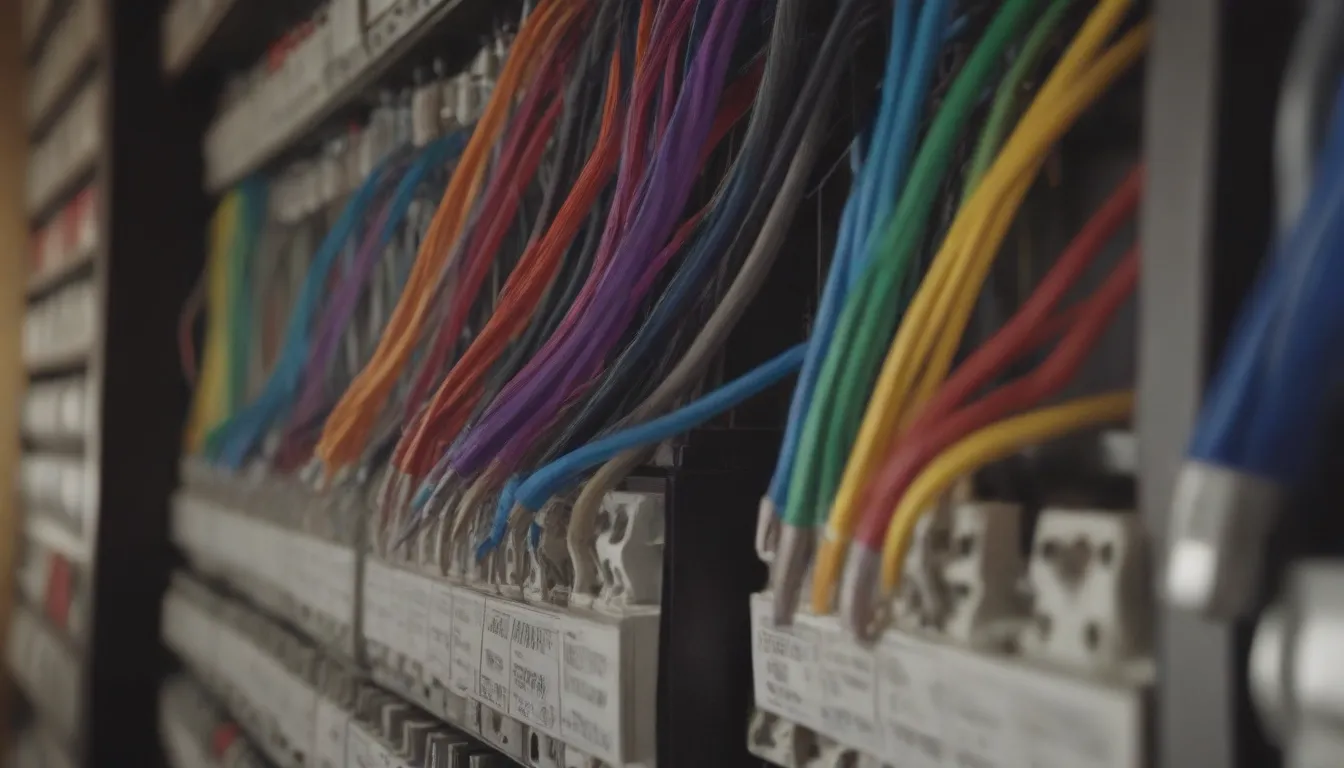Understanding Electrical Wiring Color Coding Systems

When it comes to electrical wiring, understanding the color coding system is crucial for safety and efficiency. The color of the wires in your home’s electrical system isn’t just for aesthetics – it serves a specific purpose in identifying which wires carry current, are for grounding, or serve as neutral wires. In this comprehensive guide, we will explore everything you need to know about electrical wire color codes to ensure you can navigate your home’s electrical system with confidence.
The Importance of Electrical Wire Color Codes
Electrical wire color codes are part of a standard system that helps users identify the purpose of each wire. By understanding these codes, you can ensure the safety of your household and maintain your electrical system in optimal working order. The National Electrical Code (NEC) provides guidelines on wire color codes, with white or gray indicating neutral conductors, while bare copper or green signifies ground wires. By following these color standards, you can easily differentiate between wires and determine how they power appliances or circuits.
Cable Sheathing and Wire Color Codes
Electrical cables consist of outer plastic sheathing and inner color-coded wires. The sheathing serves as a protective casing for the wires and also indicates the gauge of the wires enclosed within. The color of the sheathing, along with printed numbers and words, provides valuable information about the wires’ specifications. Additionally, within the sheathing, different wire color codes signify the wires’ purpose and potential hazards.
Cable Sheathing Colors:
- White: Indicates specific wire gauges
- Yellow: Represents another gauge size
- Orange: Differentiates wire sizes
- Black: Indicates yet another gauge extension
Wire Color Codes and Their Meanings:
- Black Wires: Designate hot wires for carrying current
- Red Wires: Also signify hot wires and are commonly used in 240-volt installations and for interconnecting smoke detectors
- White Wires with Black or Red Tape: Used as hot wires and marked with colored tape for identification
- Bare Copper Wires: Solely represent ground wires for safety purposes
- Green Wires: Also indicate ground wires and are essential for electrical grounding
- White or Gray Wires: Typically represent neutral wires and ensure proper electrical flow
- Blue and Yellow Wires: Used in specific applications such as travelers in switch circuits
Understanding the Purpose of Each Wire Color
Properly identifying each wire’s role in your electrical system is vital for safety and efficiency. Different wire colors serve distinct functions, and adhering to standard color coding ensures accurate connections and reduces the risk of accidents or malfunctions.
Benefits of Standard Wire Color Codes:
- Safety: Using the correct wire color codes reduces the risk of electrical shocks and fire hazards
- Code Compliance: Following standard color coding meets electrical code requirements for safety and consistency
- Efficiency: Easily identify wires for future projects, making installations and repairs more straightforward
It’s important to note that while white or gray wires typically denote neutral conductors, they can still carry power and pose a shock hazard. Always exercise caution when working with any electrical wiring, regardless of its color.
Tips for Working with Electrical Wiring Color Codes
When dealing with electrical wires, keep the following tips in mind to ensure your safety and the integrity of your electrical system:
- Label Wires: Use color-coded labels or markers to identify wires during installations or repairs
- Double-Check Connections: Verify wire colors before making connections to avoid errors
- Consult a Professional: When in doubt, seek guidance from a qualified electrician for complex wiring tasks
By understanding and adhering to electrical wire color codes, you can navigate your home’s electrical system confidently and ensure the safety of your household.
In conclusion, electrical wire color coding systems play a vital role in maintaining a safe and efficient electrical system in your home. By familiarizing yourself with these color standards and their meanings, you can effectively identify wires, prevent hazards, and tackle electrical projects with confidence. Remember, safety should always be the top priority when working with electricity, so follow established guidelines and seek professional help when needed.Stay informed and empowered when it comes to your home’s electrical wiring – knowing the ins and outs of wire color coding could make all the difference in keeping your household safe and your electrical system running smoothly.





